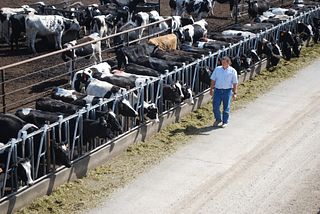Your Checkoff Dollars are Funding Vital Beef-on-Dairy Research

The practice of breeding dairy cows to beef sires for meat production continues to grow. But beef on dairy (BXD) crosses also present a unique set of challenges to solve.
That’s where your checkoff dollars come into play.
“We see higher death rates and liver abscesses in beef-dairy calves compared to straight-bred beef,” said Denise Schwab, Iowa State Extension beef specialist. “We need to address these concerns to improve the performance of these calves.”
Over the next two years, Schwab will study early-life nutrition and management practices on BXD calves at Iowa State. She will work alongside a team of beef and dairy extension specialists and researchers. The study is being funded by the state beef checkoff.
How the beef-on-dairy trend started
Historically, beef from dairy herds has contributed 20% or more to the U.S. beef supply. However, breeding dairy cows with beef sires didn’t start until 2013. Schwab explains how it started.“Holstein steers have great marbling, but their carcasses are very large. Because of this, several packers started turning them away because they were too long or heavy for the rails in a traditional beef plant. Today, only one packer in our area accepts Holstein steers. That pushed us to look for other options.”
The goal with BXD crosses is to keep the Holstein’s high marbling trait and complement it with the carcass qualities of a beef bull. But the right sire has to be selected.
“If we’re just trying to make a black Holstein carcass, we’re not helping the industry or ourselves,” Schwab said. “So I stress to producers the advantage comes when we can sell these crosses as beef cattle. To do that, we must change the muscle shape and structure.”
Selecting the right beef sire will vary per operation, but typically Angus, SimAngus and LimFlex are good choices.
Why this study is important
Establishing proper calf care for BXD cattle will be essential for product profitability.
To do so, this research project will:
- Look at how early-life nutrition and management practices impact growth and performance in BXD calves.
- Survey Iowa producers to identify the challenges they are facing.
- Create educational tools for beef and dairy producers raising BXD cattle.
It’s your checkoff at work
In-state research projects focused on finding solutions to drive producer profitability wouldn’t be possible without your checkoff.
“It’s very important for checkoff dollars to go to research like this so we can try to improve the beef industry,” Schwab commented.
To follow this project and other production research, go to iabeef.org/cattlemens-corner/production-research.

Share This Page